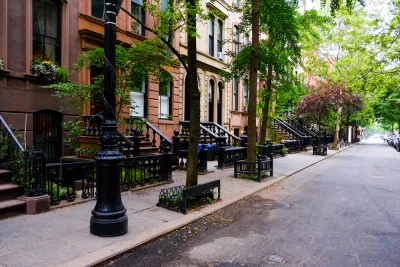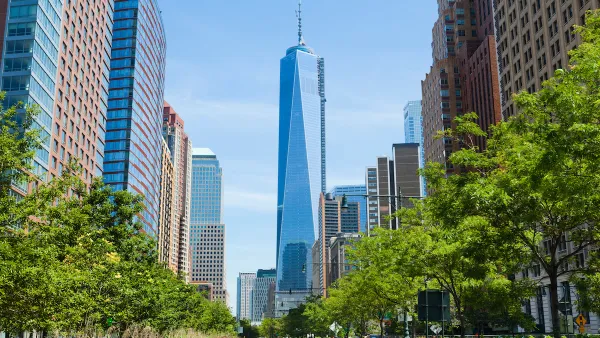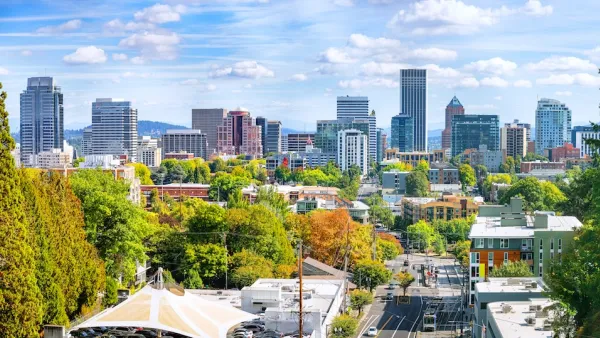A case study provided by the MillionTreesNYC program offers insight into complicated territorial boundaries that can challenge urban greening projects.

An article by Nicole Peterson digs into the results of a recent paper titled "Public Reactions to New Street Tree Planting," examining public relations efforts for the MillionTreesNYC program.
According to Peterson, the key lesson for landscape architects to gain from the study is: "we are often under the impression that because we love urban trees and seeing new trees planted, that everyone around us will love these plantings as well. Some city dwellers do in fact welcome trees with great excitement, but others may see the trees as an intrusion of their private space or territory."
For non-landscape architects and landscape architects alike, the important lesson might also be a central concept employed by Peterson: the sidewalk as a "gray zone" that blurs the line between public and private interests.
According to Peterson, "while the city has legal authority over the sidewalk, responsibility for this zone also lies with citizens. This 'Sidewalk Grey Zone' is one reason the public can have negative reactions to tree plantings. In this example, The City of New York owns the space between the curb and the property line, but the home or business owner is responsible for the maintenance and upkeep of the sidewalk."
As for the findings reported by the paper: the study's researchers "investigated the content of letters, emails, and transcriptions of calls from 311 received by the Parks Department’s Central Forestry and Horticulture Division between 2007 and 2009," according to Peterson's explanation.
"Placement objections" were the largest primary category of complaint (33%), according to Peterson. "Of those complaints, most people were concerned about the disturbance of utility lines."
The evidence of the challenging nature of the sidewalk gray zone, however, was probably most apparent in the category of "policy objections." Of those, 57% "were a general refusal, meaning the resident did not want a tree in front of their property." According to Peterson, "[t]his reaction assumes dissatisfaction with the planting policies and the city exercising its authority over right of way areas. It also indicates how the planting of street trees can evoke issues of territoriality and control."
FULL STORY: The Sidewalk Gray Zone

Analysis: Cybertruck Fatality Rate Far Exceeds That of Ford Pinto
The Tesla Cybertruck was recalled seven times last year.

National Parks Layoffs Will Cause Communities to Lose Billions
Thousands of essential park workers were laid off this week, just before the busy spring break season.

Retro-silient?: America’s First “Eco-burb,” The Woodlands Turns 50
A master-planned community north of Houston offers lessons on green infrastructure and resilient design, but falls short of its founder’s lofty affordability and walkability goals.

Test News Post 1
This is a summary

Analysis: Cybertruck Fatality Rate Far Exceeds That of Ford Pinto
The Tesla Cybertruck was recalled seven times last year.

Test News Headline 46
Test for the image on the front page.
Urban Design for Planners 1: Software Tools
This six-course series explores essential urban design concepts using open source software and equips planners with the tools they need to participate fully in the urban design process.
Planning for Universal Design
Learn the tools for implementing Universal Design in planning regulations.
EMC Planning Group, Inc.
Planetizen
Planetizen
Mpact (formerly Rail~Volution)
Great Falls Development Authority, Inc.
HUDs Office of Policy Development and Research
NYU Wagner Graduate School of Public Service



























